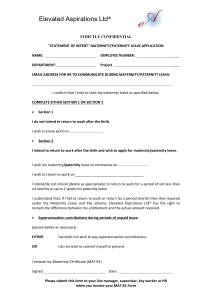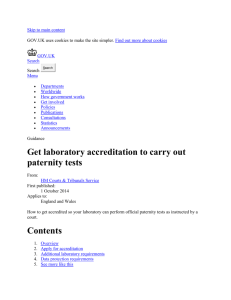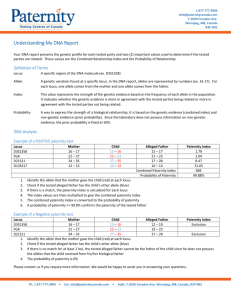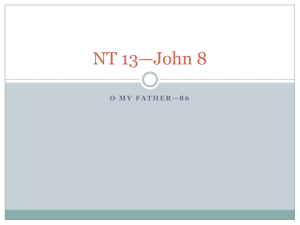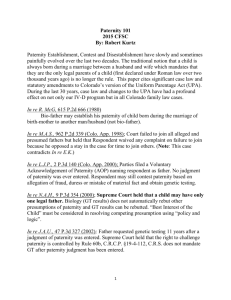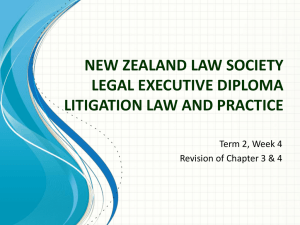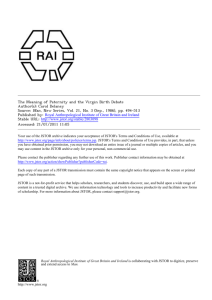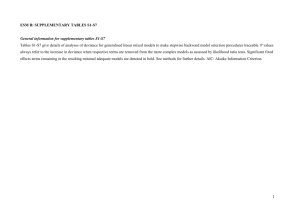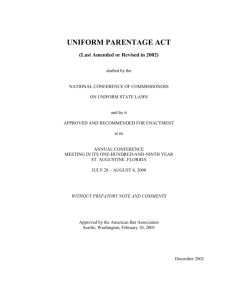The meaning of paternity and the Virgin Birth debate/ Carol Delaney
advertisement
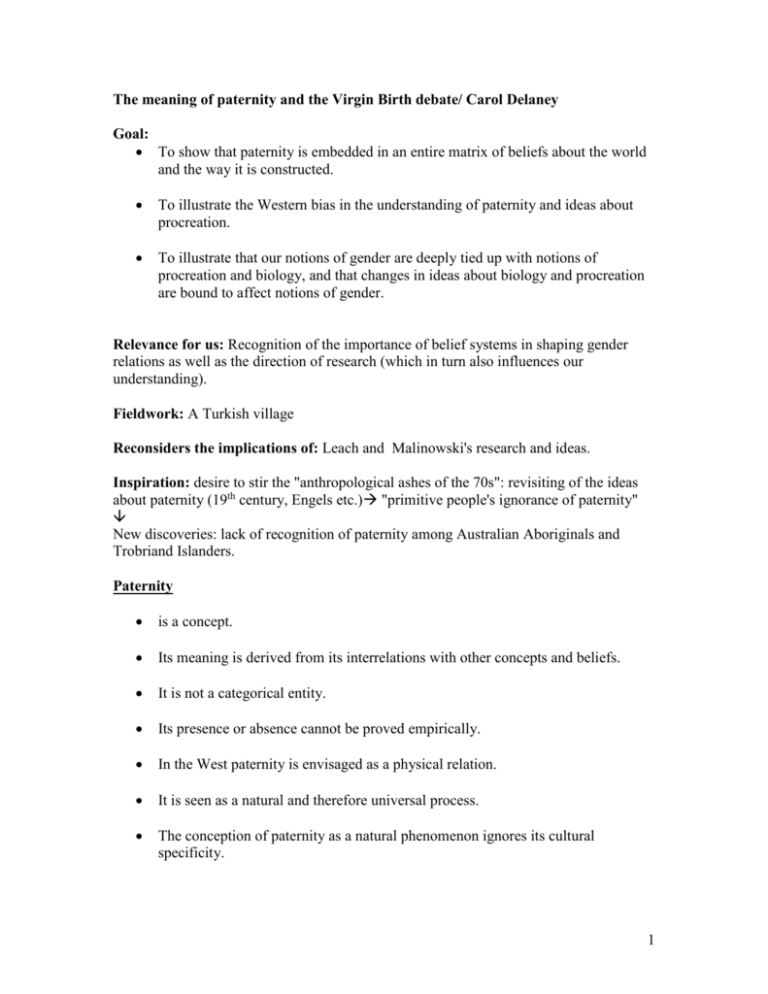
The meaning of paternity and the Virgin Birth debate/ Carol Delaney Goal: To show that paternity is embedded in an entire matrix of beliefs about the world and the way it is constructed. To illustrate the Western bias in the understanding of paternity and ideas about procreation. To illustrate that our notions of gender are deeply tied up with notions of procreation and biology, and that changes in ideas about biology and procreation are bound to affect notions of gender. Relevance for us: Recognition of the importance of belief systems in shaping gender relations as well as the direction of research (which in turn also influences our understanding). Fieldwork: A Turkish village Reconsiders the implications of: Leach and Malinowski's research and ideas. Inspiration: desire to stir the "anthropological ashes of the 70s": revisiting of the ideas about paternity (19th century, Engels etc.) "primitive people's ignorance of paternity" New discoveries: lack of recognition of paternity among Australian Aboriginals and Trobriand Islanders. Paternity is a concept. Its meaning is derived from its interrelations with other concepts and beliefs. It is not a categorical entity. Its presence or absence cannot be proved empirically. In the West paternity is envisaged as a physical relation. It is seen as a natural and therefore universal process. The conception of paternity as a natural phenomenon ignores its cultural specificity. 1 Paternity is assumed to be an inference (this assumes a unilinear and universal model of development). Primitives may or may not make the inference (denial or absence)supernatural birth therefore these beliefs are associated with Virgin Birth. Procreation is a cultural construction. It expresses and reflects categories and meanings of specific cultures. The MEANING of paternity is not physiological Bio-physical elements are utilised to express social meaning ("biological elements have primarily symbolic significance") (any other of our readings which would agree with this?) connection to a child (paternity & maternity) Paternity maternity (semantically) Traditionally: Paternity: begetting essential, creative role Maternity: bearing, giving nurturing and giving birth. These ideas are reflected in Virgin Birth. Child originated from only one source. Symbolically it is consistent with monotheism. Inscribed in symbolic form (attitudes, values, laws and institutions) in the cultural logic of these traditions. Turkish village: "Turks are Muslims"!! Turkish Muslims do not believe in the dogma of Virgin Birth. They (in theory) recognize all three monotheistic religions (Genesis 22:17). God speaks to the male subject. Women are objectified. Woman is like a field. Man plants the seed. Child originates with the father, from his seed. Women provide blood in the womb and milk at the breast (not the essential identity). 2 Woman are the field (the land and its fruits are for the group). Field (tarla) is cultivated and enclosed or "covered" by ownership. Folk theory of procreation influences the ideas on gender: Men have creative power, core of identity, autonomy. Women lack the power to create. Men's bodies are self-contained. Women's bodily boundaries oscillate and shift (remember Sciama, Thaiss, Brandes and Harris). Less intelligence, vulnerability to Satan's temptations etc.) Children belong to their father (their creator like God). Virgin Birth Mary is the medium for creation (nurturant, supportive and secondary). Her contribution makes Jesus human. Essence and identity of Jesus were given by the Father. Mary is not the co-creator, therefore she is not God (Mother and child is NOT One). Is Virgin Birth a supernatural birth like any other supernatural birth because it disavows physical paternity? Virgin Birth displays a relation between the one God (male) and earthly female. Do we need to question the difference between physical and metaphysical paternity or the concept of paternity itself? Trobriands: Baloma (matrilineal ancestor of the woman) who "lives on an island Tuma" decides to reenter the substantial world. (Virgins do not give birth.) Baloma regresses to a tiny spirit-foetus (very small and light), floats on the foam of waves or on driftwood 1. directly enters a woman in the sea. 2. gets carried in a bucket of water to the home of woman. 3. gets carried by another baloma spirit and deposited with the woman. 4. vaginal entry/entry through head. 3 Children are related to their father: Man "opens the way" for the spirit child, moulds and nourishes it by repeated intercourse (in utero) and after birth by holding it and feeding it, mashing yams. Through this shaping the child comes to resemble the man. This formative role is not the same as paternity. Dala (subsection of clan according to Malinowski) is created and maintained by the blood which unites the reincarnation of baloma, the woman and child (Weiner). The substance (transmitted via matriline) provides the identity of a child (like seed in the Turkish case). Malinowski and missionaries focused narrowly on paternity, questioned the lack of knowledge… His own explanation conforms to the folk theory of procreation. So what? Procreative beliefs in Western culture are as much a cultural construction as those of the Trobrianders. Despite the scientific explanations folk theory persists. Anthropologists ignored the meaning of paternity. Why? 4

